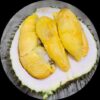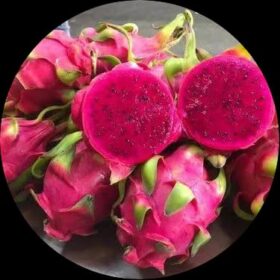- Empty cart.
- Continue Shopping
Candle Fruit (Parmentiera Cereifera)
₹650.00Current price is: ₹650.00. Original price was: ₹950.00.
Genus : Parmentiera
“The Candle Fruit Plant is a remarkable ornamental tree that produces intriguing candle-like fruits. Its striking appearance and unique fruits make it a captivating addition to any garden or landscape.”
Add to cart
Parmentiera cereifera, commonly known as the candlestick tree or guajilote, is a unique tropical plant that is native to Central and South America. The tree belongs to the family Bignoniaceae and is characterized by its distinctive cylindrical, candle-like fruits that hang vertically from the branches.
The candlestick tree can grow up to 20 meters tall and has a straight, slender trunk. The leaves are glossy green and oblong, with a length of up to 30 cm. The tree blooms with small, white flowers that are followed by the distinctive fruit, which can grow up to 30 cm long and 2.5 cm in diameter.
The fruit of the candlestick tree is fleshy and cylindrical, with a waxy surface that is green when young and matures to a brown color. The fruit contains numerous small seeds and has a sweet, aromatic flavor that is often compared to honey or caramel.
The candlestick tree is a fast-growing plant that thrives in tropical and subtropical regions with well-draining soil and regular rainfall. The tree is adaptable and can grow in full sun or partial shade. It is often used as an ornamental tree in parks and gardens due to its unusual and attractive fruits.
In addition to its ornamental value, the candlestick tree is also used in traditional medicine to treat various ailments, including respiratory problems, skin conditions, and fever. The fruit is also consumed by local communities and is used in the production of jams, jellies, and drinks.
The candlestick tree is not commonly cultivated commercially, but it has the potential to be a valuable crop due to its unique appearance and sweet, flavorful fruit. However, the tree is difficult to propagate, and the fruits are not easily harvested, making it a challenging crop to cultivate on a large scale.
Add a review
Currently, we are not accepting new reviews













Reviews
There are no reviews yet